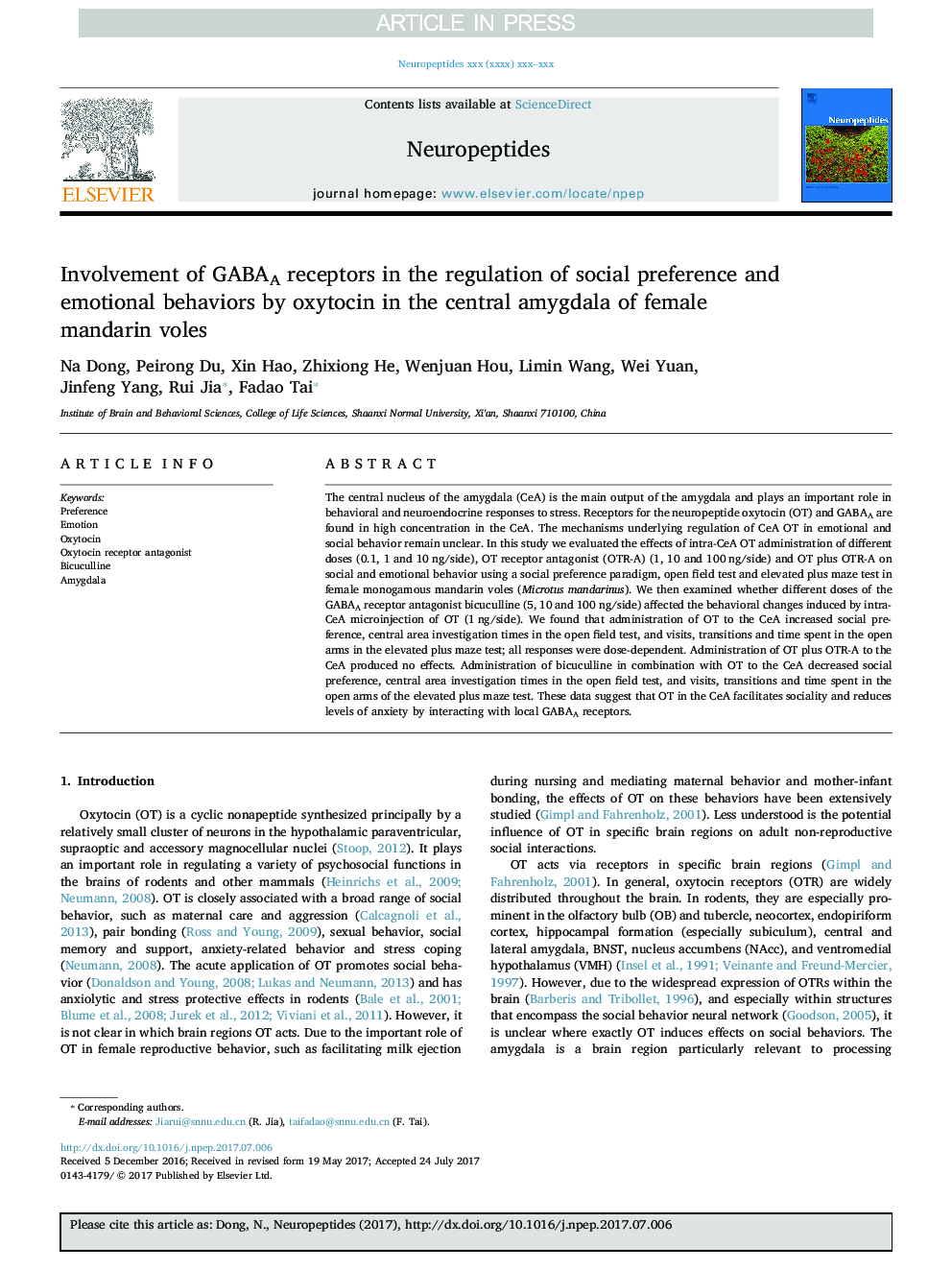| Article ID | Journal | Published Year | Pages | File Type |
|---|---|---|---|---|
| 8633358 | Neuropeptides | 2017 | 10 Pages |
Abstract
The central nucleus of the amygdala (CeA) is the main output of the amygdala and plays an important role in behavioral and neuroendocrine responses to stress. Receptors for the neuropeptide oxytocin (OT) and GABAA are found in high concentration in the CeA. The mechanisms underlying regulation of CeA OT in emotional and social behavior remain unclear. In this study we evaluated the effects of intra-CeA OT administration of different doses (0.1, 1 and 10Â ng/side), OT receptor antagonist (OTR-A) (1, 10 and 100Â ng/side) and OT plus OTR-A on social and emotional behavior using a social preference paradigm, open field test and elevated plus maze test in female monogamous mandarin voles (Microtus mandarinus). We then examined whether different doses of the GABAA receptor antagonist bicuculline (5, 10 and 100Â ng/side) affected the behavioral changes induced by intra-CeA microinjection of OT (1Â ng/side). We found that administration of OT to the CeA increased social preference, central area investigation times in the open field test, and visits, transitions and time spent in the open arms in the elevated plus maze test; all responses were dose-dependent. Administration of OT plus OTR-A to the CeA produced no effects. Administration of bicuculline in combination with OT to the CeA decreased social preference, central area investigation times in the open field test, and visits, transitions and time spent in the open arms of the elevated plus maze test. These data suggest that OT in the CeA facilitates sociality and reduces levels of anxiety by interacting with local GABAA receptors.
Related Topics
Life Sciences
Biochemistry, Genetics and Molecular Biology
Endocrinology
Authors
Na Dong, Peirong Du, Xin Hao, Zhixiong He, Wenjuan Hou, Limin Wang, Wei Yuan, Jinfeng Yang, Rui Jia, Fadao Tai,
